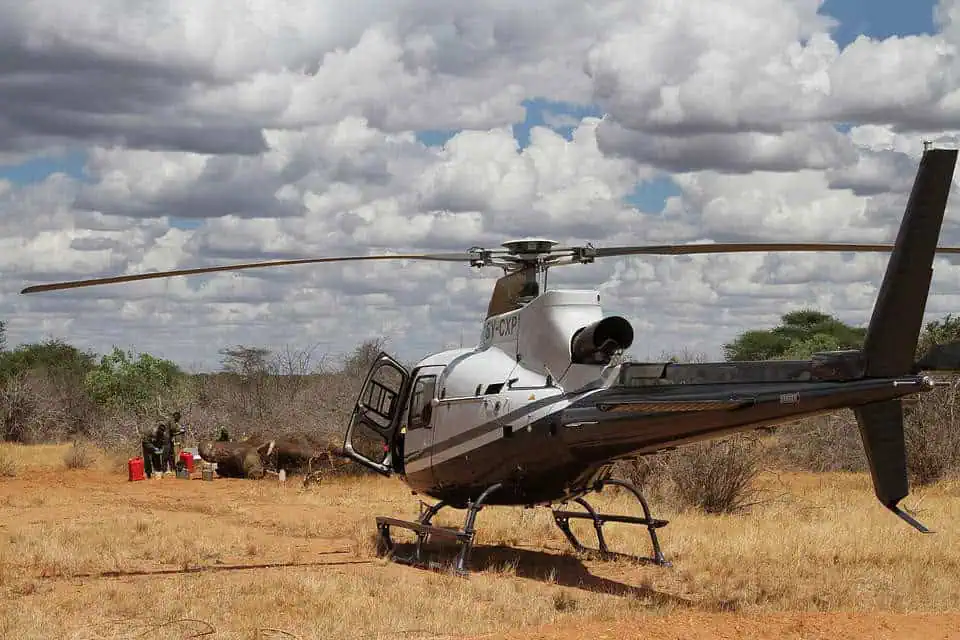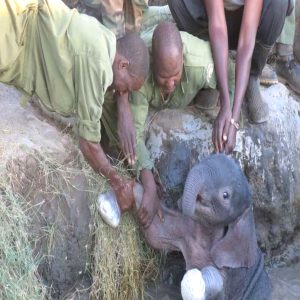Tsavo, one of the last remaining wilderness areas, is vital to our natural world. However, protecting this vast and diverse landscape is a significant challenge.
The airwing team is crucial in monitoring and safeguarding Tsavo. It offers visibility and access that ground patrols cannot achieve alone.

Regular aerial patrols are essential for protecting large protected areas like Tsavo. On the morning of April 24th, during one of these routine flights, a pilot spotted a tusker, a large male elephant, making its way across the landscape.
Upon closer inspection, the pilot noticed something concerning: the elephant had pus on its shoulder, indicating a potentially serious infection.

Recognizing the urgency of the situation, the pilot marked the elephant’s GPS coordinates, took detailed photographs, and then sent them to the Kaluku Field Headquarters.
Without delay, the fixed-wing pilot flew to Voi, where Dr. Poghon and the SWT/KWS Tsavo Mobile Veterinary Unit were ready to be deployed.
The team quickly loaded the helicopter with all the necessary medical supplies, knowing that ground support would be impossible due to the remote location.

Dr. Poghon calculated the exact dosage needed for the anesthetic dart using the aerial photos. The helicopter pilot then gently guided the elephant into more accessible terrain before the dart was administered. Once the elephant was safely sedated, the team landed and immediately began treatment.
The wound on the elephant’s shoulder, though small in appearance, was severely infected and deep enough to engulf the veterinarian’s forceps nearly.
The wound’s location and extent of infection suggested it was caused by a poisoned arrow, likely shot from a high vantage point.

The veterinary team thoroughly cleaned the wound, applied healing green clay, and administered antibiotics and anti-inflammatory medications. With the treatment complete, the team prepared for the elephant’s revival.
They remained in the helicopter while Dr. Poghon administered the reversal drug, ready to take off at a moment’s notice.
As the elephant regained consciousness, the helicopter lifted off, hovering nearby to monitor the situation without causing additional stress.

Fortunately, the elephant appeared untroubled by the ordeal and slowly returned to the wild.
This tusker, likely in his late 50s or early 60s, had already begun to lose condition due to the infection.
Without intervention, he might not have survived. Thanks to the pilot’s sharp eyes and the team’s swift action, this majestic elephant was given a second chance to roam the wilds of Tsavo.







